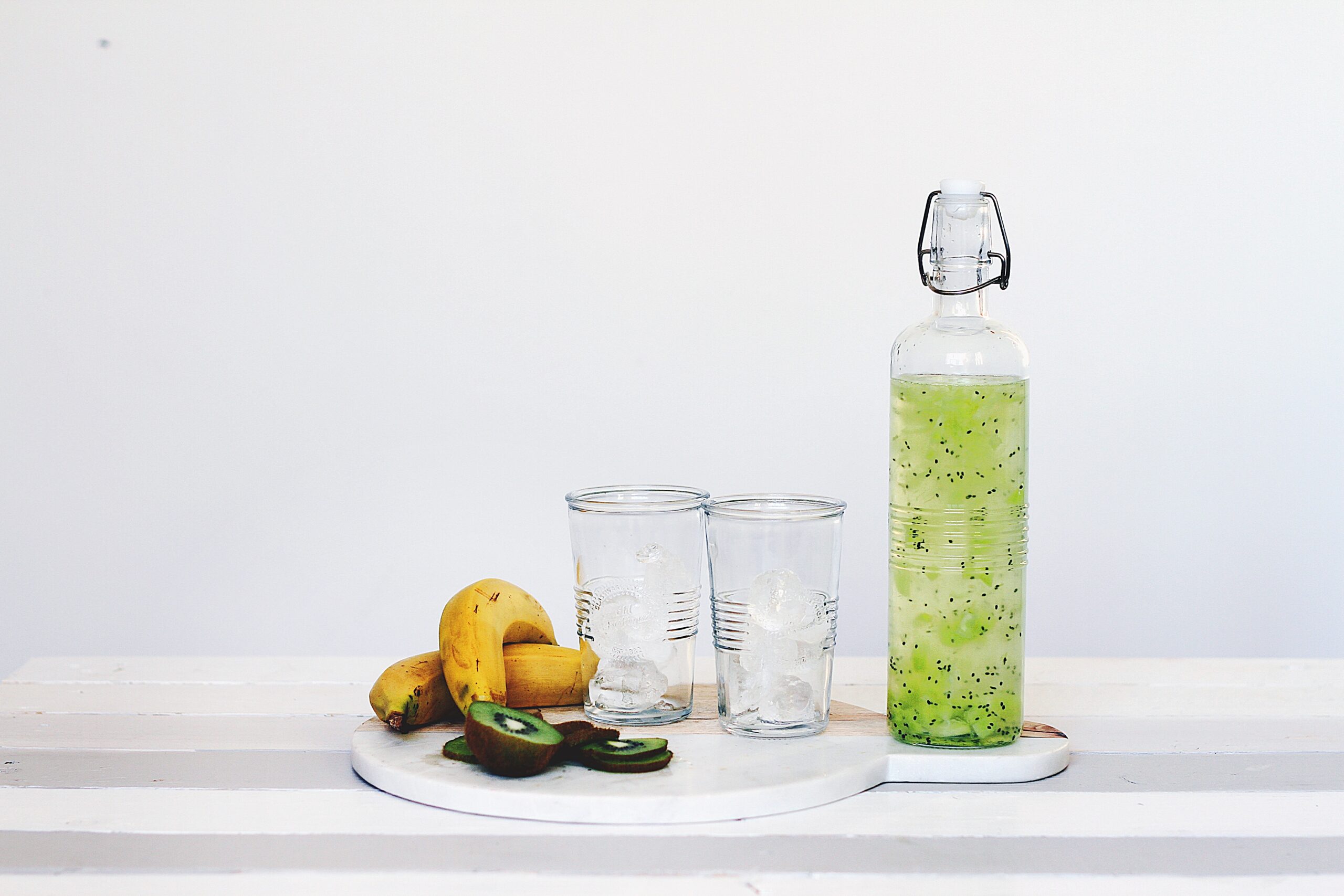The Standard American Diet is filled with far too much sugar and refined carbohydrates, contributing to the climbing rates of illness and obesity in our society for quite some time. More and more people are realizing that being mindful of carbohydrate intake may improve their health and boost their longevity. But how do consumers know which low carb products to choose? For starters, they can start looking less at total carbohydrates, and more at a food’s “net” carbs instead. In order to fully understand this concept, it is important to first learn how carbohydrates are digested in the first place.
Digestion and Absorption Process of Carbohydrates and Fiber
The digestive route for all carbohydrates is relatively the same. Whether consuming a candy bar, a bowl of oatmeal, or a pack of licorice, the body’s system begins the food’s mechanical breakdown in the mouth as saliva is secreted. In addition to saliva, an enzyme known as amylase breaks down the sugars of the carbohydrate. As food continues along the digestive system, it is broken down further into glucose by the liver and stored in the form of glycogen muscles and cells. In special cases, such as insulin resistance or diabetes, the body may send glucose back to the blood via the liver. Body systems will then utilize this stored energy to perform its everyday functions. These stored macronutrients are mainly used by the brain because without them, ketones, as achieved in the ketogenic diet, are the only alternative that work to fuel the brain.
Numerous structures and functions of carbohydrates control the daily work of the human body. Not all carbs are the same, and therefore, should not be treated as such. There are even carbohydrates that the human body cannot digest, for example, fiber.
Fiber goes through the digestive process without any breakdown at all. Once in the colon, it either absorbs water and converts to short chain fatty acids (soluble fiber), or bulks up your stool (insoluble fiber). The bottom line is that fiber is not digested like other forms of carbs, and thus, does not impact insulin or blood sugar levels. Similarly, for some, sugar alcohol carbohydrates are digested relatively untouched and without the need for insulin.
What are Net Carbs?
Whenever a carbohydrate is consumed, there is a total amount that is absorbed in the body and a total amount that cannot be absorbed (like fiber and sugar alcohols). Net carbs are calculated by the difference between these two amounts of carbohydrates. Net carbs are also referred to as active or impact carbohydrates, that are utilized to show you how many carbohydrates you are actually digesting. This may seem simple, but as many things go in nutrition, it’s not as clear cut as it sounds. For starters, the FDA (the agency that regulates food labels) has not weighed in on an official definition of net carbs. There are a few things to consider when examining the net carb approach. The first is that not every individual metabolizes carbohydrates in the same manner. In fact, studies show that your gut bacteria may play a role in carbohydrate metabolism. Gut bacteria are like a fingerprint – everyone’s is different. Another point of contention is that the calculation can become more complex with the addition of multiple fibers and sugar alcohols in a product.
Determining Variables of Carbohydrate Digestion
Fiber can safely be said to have no impact on insulin and blood sugar in the body. It is a non-digestible component of complex carbohydrates, lowering the total amount of carbohydrates digested. For example, a bean-based pasta has 20 grams of carbohydrates per serving and 12 grams of fiber. Since the fiber is not broken down, it is deducted from the 20 grams of carbohydrates. In theory, consumption of this product limits your carbs to only 8 grams.
Sugar alcohols, also known as polyols, are carbohydrates that are neither sugar nor alcohol, containing no ethanol (the primary component in traditional alcohol). They are found naturally in some foods, but the majority of them are now seen in low carb food products. They are only partially digested, but their glycemic index (the measure of impact to blood sugar and insulin) relies on the type. Sorbitol and xylitol for example have slighter higher GI’s than erythritol, which has a glycemic index of zero. To put this in perspective, the glycemic index of table sugar is about 65.
There are also concerns about sugar alcohols causing bloating and gas since they pass through the digestive system relatively untouched, only to get fermented in the large intestine. Erythritol remains the one sugar alcohol that studies find as the best tolerated due to its low molecular weight and minimal impact in the colon.
Some studies have examined the blood sugar impact of certain sugar alcohols as well. Though the digestibility is not high by any means, it still could slightly impact the net carb calculation.
Are Sugar Alcohols Safe for Human Consumption?
Currently, no significant data regarding sugar alcohols has been discussed in scientific literature. While large amounts of sugar alcohols such as mannitol, xylitol and sorbitol can cause gastrointestinal discomfort, small quantities appear to be well tolerated in most individuals. They also appear to be safer than traditional artificial sweeteners, such as aspartame and sucralose, which show potential links to type 2 diabetes and obesity.
Why You Should You Use Net Carbs Calculations in A Low Carb Approach
You may have been instructed to follow a lower carbohydrate approach by your doctor or dietitian. This approach encourages patients to be more intentional with their dietary choices. For example, if I give my patient a 50g carbohydrate limit for the day, they will surely choose the bean-based pasta over the basic whole grain pasta, as it provides a minimal amount of digestible carbohydrate. A whole wheat option could pass on at least 20 more carbs to their daily limit. A net carb approach is not an exact science by any means, but at least it promotes my patients to focus on fiber and avoid sugar. Just realize that the calculation in whole foods, an apple for example, will most likely be more exact than in a food product.
The net carb approach is gaining popularity and knowing how the calculation is made can provide you the insight and power you need to truly alter your diet.
Elements of Successful Low Carb Diet
A low carb diet does not mean that you need to cut out ALL carbohydrates from your diet. Rather, a low carb prescription can be more of a restructure from where your carbs are coming from. A successful low carb diet will focus on the quality of food being consumed. This breakdown is altered slightly when a ketogenic approach is taken. In this case, the quantity of carbohydrates is significantly limited, however the quantity of fat is not. In either scenario, food should be nutrient dense and higher in fiber which will provide a lower net carb count. Options that follow this plan are satiating and should remove the need for participants to measure portions. Eliminating the constant fear of portion control allows individuals to truly tune into their bodies. Listening to hunger signals and eating until satisfied can help avoid overindulgence. Additionally, recalling that snacking throughout the day is not mandatory can be an important variable of change in this type of diet. Finally, keeping your drinks void of sugar of any kind (no cola, juice, etc.) and avoiding large amounts of artificial sweeteners will help keep cravings for sweet options at bay and easier to ignore.
To help you get started we’ve provided some meal ideas to follow below:
Breakfast Options
- Crustless quiche cups with a handful of berries of your choice (strawberries, blueberries, raspberries or blackberries)
- 1 piece of keto friendly or sprouted grain toast topped with no added sugar almond butter, coconut flakes and cinnamon
- 1 cup of plain yogurt with chopped almonds or walnuts with ground flax seed
- 1 soft boiled egg with sliced avocado drizzled with olive oil
- Egg frittata packed with mushrooms, onion, spinach, and chopped turkey bacon
- Protein smoothie made with two scoops of any no added sugar, organic, plant-based protein powder, 1 cup unsweetened almond milk, 2 TBS pure cocoa powder and ice for consistency. If you need some sweetener, add a few drops of stevia
- Zucchini muffins are a great low carb but filling option (plenty of recipes online)
Lunch Options
- Grilled wild salmon with 2+ cups arugula/spinach with a mix of olive oil and lemon juice. Top with tomatoes and shredded parmesan cheese
- Turkey chili (1-pound turkey mixed with diced tomatoes, no added sugar tomato sauce, cinnamon and chili powder. Feel free to add in green peppers and top with Cheddar cheese. For a higher nutrient content, I will usually throw in a bag of riced broccoli or cauliflower
- Chicken or salmon salad (mix canned chicken or salmon with organic mayo, add in herbs, salt and pepper and chopped onions and celery. Put salad on top of 2 100% whole grain rice cakes.
- Shaved Brussel sprout salad with strips of tempeh or tofu
- Miso soup with spinach and tofu
- Salmon cakes
- Avocado boats (take 1/2 avocado and season with salt and pepper, crack an egg in the middle and baked 15-20 minutes at 375 – top with cheese in the last few minutes)
Dinner Options
- Small bowl of black bean pasta with pesto sauce and steamed broccoli mixed in
- Zucchini noodles with grilled chicken and a flavored infused olive oil like garlic or lemon. Can top with herbs and lemon zest
- Cauliflower or keto friendly crust pizza topped with cheese, grilled vegetables and tomato sauce. Add a side salad with grated carrots, chopped walnuts and an olive oil and balsamic mix
- Garlicky tofu bowl mixed with cauliflower rice and steamed spinach
- Burger with portabella mushroom “bun” – place grilled grass-fed burger patty in between two grilled portabella mushroom caps and top with tomato, lettuce and onion
- Spinach Chicken or turkey meatballs simmered in tomato sauce with a simple side salad
- Wild shrimp Swiss chard tacos (grill or sautee wild shrimp and roll in steamed Swiss chard leaves topped with chopped cilantro, cubed avocado and fresh lime
Smart carb snacks
- Freeze dried or baked cheese balls and cheese discs
- Peanut butter balls (mix ½ cup crunchy peanut butter with 2 TBS ground flax seeds. Form into balls and store in freezer)
- Mixed nuts
- Celery with almond butter and cinnamon. Another option, top celery with is cream cheese and everything bagel seasoning
- Roasted chickpeas
- Tofu, turkey, or salmon jerky
- Turkey rolled around string cheese stick
- Kale chips
- Handful of berries, or 1 small apple
- 1 square of raw pure cocoa
- Guacamole or salsa with paleo nut type crackers
The challenge of transitioning to a low carb diet will be dependent on where you are when you start the process. If you are used to eating high carbohydrates foods, eating low carb may take you a bit longer to get used to. Additionally, if the goal is to reach ketosis, the timing of when you arrive there will also vary by starting point. If low carb is new for you, the first few days (probably first 2 – 4 days) will be the most challenging for you. If carbohydrates have never been on the front burner of your diet, the transition will be easier. Either way, it is important to recall that although carbohydrates are the preferred fuel of the body, it can and will adjust to find the fuel it needs from alternative supply stores. Take the time to explore the low carbohydrate diet, the low carb industry, and the low carb products in your grocery store to kick start your dietary pattern.



